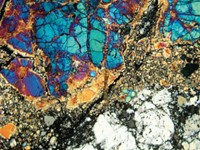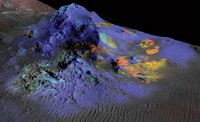Advertisement
Grab your lab coat. Let's get started
Welcome!
Welcome!
Create an account below to get 6 C&EN articles per month, receive newsletters and more - all free.
It seems this is your first time logging in online. Please enter the following information to continue.
As an ACS member you automatically get access to this site. All we need is few more details to create your reading experience.
Not you? Sign in with a different account.
Not you? Sign in with a different account.
ERROR 1
ERROR 1
ERROR 2
ERROR 2
ERROR 2
ERROR 2
ERROR 2
Password and Confirm password must match.
If you have an ACS member number, please enter it here so we can link this account to your membership. (optional)
ERROR 2
ACS values your privacy. By submitting your information, you are gaining access to C&EN and subscribing to our weekly newsletter. We use the information you provide to make your reading experience better, and we will never sell your data to third party members.
Physical Chemistry
Nuked zinc isotopes on Earth support moon formation theory
Trinity nuclear test site provides a ready-made laboratory for the study of evaporative isotope fractionation
by Elizabeth K. Wilson
February 13, 2017
| A version of this story appeared in
Volume 95, Issue 7

A study of glass formed by sand that was fused during the first nuclear bomb test not only demonstrates that high temperatures fractionate zinc isotopes, but also strengthens the giant-impact theory of the moon’s formation (Sci. Adv. 2017, DOI: 10.1126/sciadv.1602668). The moon is highly depleted in volatile elements such as zinc compared with Earth. Scientists have suggested that the volatiles likely evaporated when a planet-sized object hit the nascent Earth billions of years ago, and the moon formed from the detritus. But in lunar samples, the zinc isotope fractionation patterns—the distribution of isotope abundances relative to each other—have been difficult to interpret in the context of the giant-impact scenario. A group led by James Day of Scripps Institution of Oceanography turned to the site of the 1945 Trinity nuclear bomb test in New Mexico, which is a rare ready-made laboratory. The tremendous heat and pressures created by the nuclear blast were similar to those believed to be involved in planetary formation and can’t otherwise be simulated on Earth. The explosion melted silica on the desert floor, producing a green glass called trinitite. The researchers found that the closer the trinitite samples were to the original blast site, the more fractionated the zinc isotopes, supporting the moon-formation hypothesis.





Join the conversation
Contact the reporter
Submit a Letter to the Editor for publication
Engage with us on Twitter